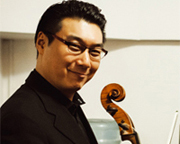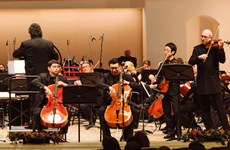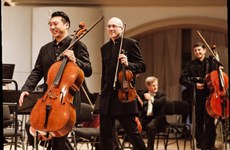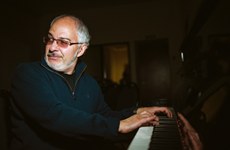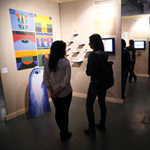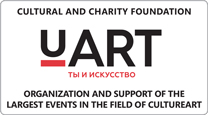CELLO. 3−DIMENSION
Text: Sergey Khachaturov
Photo: Sergey Karpov, Denis Kuznetsov, Dmitry Chuntul
The vii Vivacello festival, organised by Boris Andrianov

The cello has formally travelled around
A concert of chamber music, featuring the grand octet for strings by George Enescu performed with phenomenal drive by the best of the best soloists: Alena Baeva, Andrei Baranov, Nikita Borisoglebsky, Rodion Petrov, Fedor Belugin, Daniil Grishin, Boris Andrianov and Kristina Blauman, took place in the Small Hall of the Moscow Conservatory. An evening with cellist, composer and virtuosic improviser Stephan Braun was held in the Multimedia Art Museum (formerly the House of Photography). In the Vrubels Hall of the Tretyakov Gallery an evening of sonatas was held with performances from the headliners of today’s performing arts: Jing Zhao, Alena Baeva and Vadim Kholodeno who performed in a manner that corresponded to the refined atmosphere of the gallery’s genius loci.
Both classics (Ivan Monigetti) and teenagers (violinist Rennosuke Fukuda, born in 1999) participated in the concerts.
.
 |
 |
 |
|
Art Director of the Festival Boris Andrianov |
Cellist Narek Akhnazaryan |
Japanese violinist Rennocuke Fukuda |
The cello’s ability to accumulate the potential of the difficult, inspiring and talented was clear in the very program of the festival. Thus at the festival opening ceremony the theme of Wandering the World with the Violin and Cello was declared. The baroque concertos of Antonio Vivaldi became a blessing for the journey, and the culmination of the festival took the form of opuses by the classics of modernism Alfred Schnittke and Gia Kancheli. The symphony orchestra of Moscow the “Russian Philharmonia” under the baton of Dmitri Jurowski accompanied Narek Akhnazaryan, Timothy Park, Rennosuke Fukuda, Alexei Lundin, Nikita Borisoglebsky and Fedor Amosov.
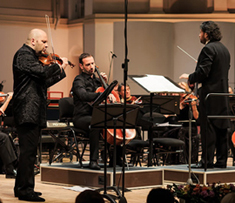 |
 |
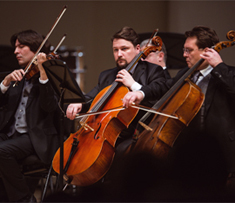 |
| Boris Brovitsyn (violin), Boris
|
Ivan Monigetti – cellist, student of Mstislav Rostropovich | MOSCOW VIRTUOSI |
At each concert, whether it featured Vivaldi,
A separate remark, the “Quiet Prayer” by Gia Kancheli,
was performed with the orchestra by Boris Brovtsin and Boris Andrianov.
Refering
|
— There are many festivals now, but few projects that have an influence on problem and promote right ideas, which in today’s world is very important. For Russia this is a significant project and is at the same time interesting in an international context. What the Festival does is to popularize cello music and this helps us all.
|
The cello is an example and instructor of the multidimensional complex understanding of the musical world. The corner stone of this festival can be considered to have been the “Rococo Variations” by Tchaikovsky which was performed, in various interpretations, three times. In the Multimedia Art Museum Stephan Braun used the Variations as material for his multimedia improvisation in which the cello took on the voices of the other instruments and was heard in different genres of musical culture. At the festival closing ceremony in the Tchaikovsky Hall the version of the “Rococo Variations” as edited by K.W.F. Fitzenhagen was exemplarily performed by laureate of the XV Tchaikovsky Competition Jonathan Roozeman.
The 2015 festival closed with the world premiere of the “Jazz Rococo Variations” for cello and orchestra by Alexander Rozenblatt. Boris Andrianov performed the solo part accompanied by the “Moscow Virtuosi” chamber orchestra. The filigree development of each theme in the improvisation by Braun showed that the cello can indeed mimic the voice and appear in different forms and genres, from the jazz guitar to a percussive rhythm section. In general, Braun produced a searing, very complex lyrical message akin to the ballads of a hero of the past festival Edin Karamazov. He understood the text of Tchaikovsky’s “Rococo Variations” on a very deep structural level.
|
— At this festival I really value that it is not only a celebration of the cello but a celebration of music as a whole. At the opening ceremony of Vivacello we will perform Vivaldi and Schnittke and already at this concert you can judge the width of the festival’s spectrum of genres. Music should live longer, both already
|
It seems that Rozenblatt was more attracted by the chance to use Tchaikovsky’s cello variations as sound decorations in a cozy retro style; similar to that of the film by Karen Shakhnazarov “We are from Jazz”. In this context the “Rococo Variations” became a channel for popular, mass culture.
Indeed, the passionate and genuine, technically perfect performance of the “Variations” by Jonathan Roozeman and the “Moscow Virtuosi” under the baton of Sergei Smbatyan stripped away the mothballs and allowed us to hear the classic anew. In this way, one subject from Tchaikovsky’s opus enabled the cello to become a channel to three dimensions of culture: popular, classical and experimental art house.
Back



